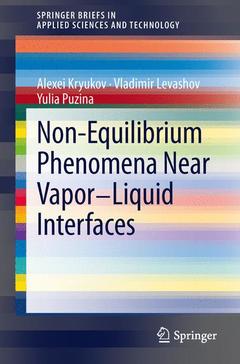Description
Non-Equilibrium Phenomena near Vapor-Liquid Interfaces, 2013
SpringerBriefs in Applied Sciences and Technology Series
Authors: Kryukov Alexei, Levashov Vladimir, Yulia Puzina
Language: English
Subjects for Non-Equilibrium Phenomena near Vapor-Liquid Interfaces:
52.74 €
In Print (Delivery period: 15 days).
Add to cart54 p. · 15.5x23.5 cm · Paperback
Description
/li>Contents
/li>Comment
/li>
This book presents information on the development of a non-equilibrium approach to the study of heat and mass transfer problems using vapor-liquid interfaces, and demonstrates its application to a broad range of problems. In the process, the following peculiarities become apparent: 1. At vapor condensation on the interface from gas-vapor mixture, non-condensable components can lock up the interface surface and condensation stops completely. 2. At the evolution of vapor film on the heater in superfluid helium (He-II), the boiling mass flux density from the vapor-liquid interface is effectively zero at the macroscopic scale. 3. In problems concerning the motion of He-II bridges inside capillaries filled by vapor, in the presence of axial heat flux the He-II bridge cannot move from the heater as would a traditional liquid, but in the opposite direction instead. Thus the heater attracts the superfluid helium bridge. 4. The shape of liquid-vapor interface at film boiling on the axis-symmetric heaters immersed in liquid greatly depends on heat flux in the interface. Thus a new type of hydrostatic problems appears when in contrast to traditional statements the shape of the liquid-vapor interface has a complex profile with a point of inflection and a smooth exit on a free liquid surface.
Introduction.- Background for pure (one component) substance.- Evaporation and condensation of vapor-gas mixtures.- Motion of vapor-liquid interfaces.- Liquid - vapor interface form determination.
These books may interest you

Electric Fields, Additives and Simultaneous Heat and Mass Transfer in Heat Transfer Enhancement 52.74 €

Bubble Systems 105.49 €


